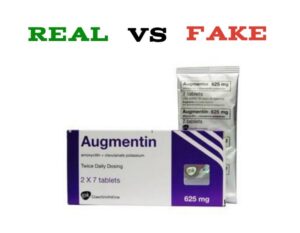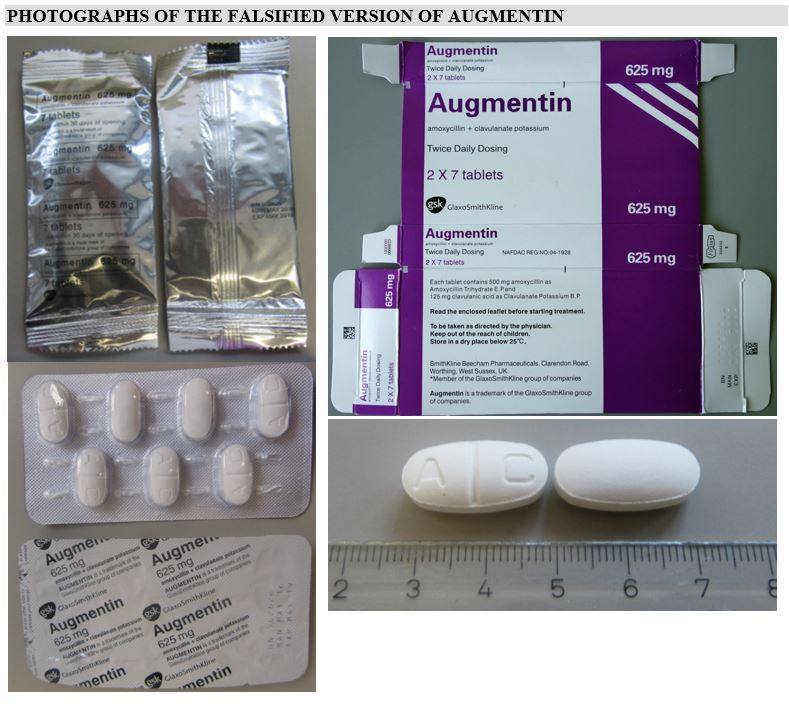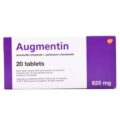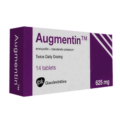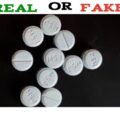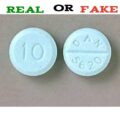What is Augmentin?
Augmentin is a prescription antibiotic medication. It’s used to treat infections caused by bacteria. Augmentin belongs to the penicillin class of antibiotics. Augmentin contains two drugs: amoxicillin and clavulanic acid. This combination makes Augmentin work against more types of bacteria than antibiotics that contain amoxicillin alone.
Augmentin is effective for treating infections caused by many different types of bacteria. These include bacteria that cause:
- pneumonia
- ear infections
- sinus infections
- skin infections
- urinary tract infections
Augmentin comes in three forms, all of which are taken by mouth:
- immediate-release tablet
- extended-release tablet
- liquid suspension.
Augmentin generic name
Augmentin is available in a generic form. The generic name of Augmentin is amoxicillin/clavulanate potassium. Generic drugs are often less expensive than the brand-name version. In some cases, the brand-name drug and the generic version may be available in different forms and strengths. The generic version of this drug is available in the same forms as Augmentin, as well as in a chewable tablet.
Augmentin dosage Forms
The Augmentin dosage your doctor prescribes will depend on several factors. These include:
- the type and severity of the condition you’re using Augmentin to treat
- your age
- the form of Augmentin you take
- other medical conditions you may have
The following information describes dosages that are commonly used or recommended. However, be sure to take the dosage your doctor prescribes for you. Your doctor will determine the best dosage to suit your needs.
Forms and strengths
The three forms of Augmentin come in different strengths:
- immediate-release tablet: 250 mg/125 mg, 500 mg/125 mg, 875 mg/125 mg
- extended-release tablet: 1,000 mg/62.5 mg
- liquid suspension: 125 mg/31.25 mg per 5 mL, 250 mg/62.5 mg per 5 mL
For the strengths listed above, the first number is the amoxicillin amount and the second number is the clavulanic acid amount. The ratio of drug to drug is different for each strength, so one strength can’t be substituted for another.
How to Spot Fake Augmentin Tablets and Suspension
A safe medicines supply is fundamental for public health. A fake drug is a drug product which is not what it purports to be. It is any drug product which is formulated or made to appear to be better than it really is. The term can also refer to a drug which is deliberately and fraudulently mislabeled with respect to identity and/or source or with fake packaging. Falsified medicines are often the business of criminal cartels.
Last year, the World Health Organization (WHO) issued an alert on fake versions of the Augmentin discovered in Uganda and Kenya. In addition, the Kenya Pharmacy and Poisons Board confirmed that the same batch of falsified Augmentin had previously been found at patient level in Kenya. Fake Augmentin is a common feature in Nigeria, Ghana and Cameroon. The real Augmentin is a fixed-dose combination medicine consisting of amoxicillin and clavulanic acid but the fake version contained no antibacterials whatsoever. Fake “Augmentin” 625 mg tablets and blister pack with tropical protection wrap and patient box are all made by counterfeiters with high professional “standard” but without any antibacterial medicines inside.
What does fake Augmentin look like?
A consumer may not have access to most of the test equipment used by regulatory bodies to verify the identity of a drug product but there are simple guidelines that can help identify a fake Augmentin pill:
Check the Augmentin pill Packaging: This is the simplest and the easiest method to check the authenticity of Augmentin. Check the packaging for details like unusual fonts, print color, and missing logo. Analyze whether it appears the same or different from the one you have used before.
No Breakage in the Seal: An Augmentin packet that comes with a security seal should not be damaged. Look for a crack or breaks in the sealing tape.
Check the Augmentin pill Dosage Form: Look for dissimilarities in physical appearance of the drug like its color, size, uniformity, consistency, shape, etc.
Physical Attributes of tablet: As stated by World Health Organization, the common physical attributes that need to be looked out in medicine tablets are;
- Small pieces of tablets, excessive powder at the bottom of the medicine container, or brittle and crumbly capsule spilling powder.
- Cracks in the tablets or capsule.
- The appearance of crystal on the container walls or on the medicine tablets.
- Softening or hardening of the medicines.
- Swelling, spots or discoloration of the tablets or capsule.
Allergies / Unexpected Side Effects from using Augmentin: Most of the medicines including Augmentin pill have side effects. It is important to consult your doctor before the usage to keep a check on allergies arising from it. If you notice certain unexpected or harmful side effects from your medication, report to your doctor immediately.
Price of Augmentin pill: If the price of an Augmentin pill is suddenly far cheaper than the usual rate, double check the product as there may be a chance that the fake companies wanted to lure customers by providing medicines at much cheaper rates.
Verify Online or SMS: Many countries have unique methods for the verification of the genuineness of pills using authentication code or other online portals to confirm the authenticity of the Augmentin pill being purchased.
General Side Effects You Should Expect From a Genuine Augmentin
Augmentin can cause mild or serious side effects. The following list contains some of the key side effects that may occur while taking Augmentin. This list does not include all possible side effects. For more information on the possible side effects of Augmentin, or for tips on how to deal with a troubling side effect, talk with your doctor or pharmacist.
More common side effects
The more common side effects of Augmentin include:
- diarrhea
- nausea
- skin rash
- vaginitis (caused by problems such as yeast infection)
- vomiting
These side effects may go away within a few days or a couple of weeks. If they’re more severe or don’t go away, talk to your doctor or pharmacist.
Serious side effects
Call your doctor right away if you have serious side effects. Call 911 if your symptoms feel life-threatening or if you think you’re having a medical emergency. Serious side effects and their symptoms can include the following:
Liver problems. It’s not common, but some people who take Augmentin can develop liver damage. This seems to be more common in seniors and those who take Augmentin for a long time. Usually these problems go away when the medication is stopped, but in other cases, they may be severe and require treatment. Tell your doctor if you develop symptoms of liver problems while taking Augmentin. Your doctor may do blood tests to check for liver damage. Symptoms can include:
- stomach pain
- fatigue
- yellowing of your skin or the whites of your eyes
Intestinal infection. Some people who take antibiotics, including Augmentin, can develop an intestinal infection called Clostridium difficile. Tell your doctor if you develop symptoms of this infection. Symptoms can include:
- severe diarrhea that doesn’t go away
- stomach pain or cramping
- nausea
- blood in your stool
Allergic reaction. Serious allergic reactions can occur in some people who take Augmentin. This is more likely to happen in people with a penicillin allergy. You may not be able to take this medication again if you’ve ever had a serious allergic reaction to it. Taking it again could be fatal. If you’ve had a reaction to this medication in the past, talk to your doctor before taking it again. Symptoms of an allergic reaction can include:
- severe skin rash
- hives
- swelling of the lips, tongue, throat
- trouble breathing
Rash
Many medications, including Augmentin, can cause rash in some people. This is a common side effect of Augmentin, which is a penicillin-type antibiotic. This class of antibiotics causes skin rash more often than most other kinds of antibiotics. Rash occurs in about 3 percent of people who take Augmentin.
Raised, itchy, white, or red bumps that occur after the first couple doses of Augmentin may indicate an allergy to the medication. If this occurs, contact your doctor. If you have an allergic reaction, you may need to be treated with a different antibiotic. Rashes that develop several days after you take the medication and appear as flat, red patches often indicate a different kind of rash that’s not caused by an allergic reaction. These usually go away on their own after a few days.
Fatigue
Fatigue is not a common side effect of Augmentin. However, it’s common for people who are fighting infections to feel fatigued, tired, or weak. If you become fatigued after starting Augmentin, or your symptoms are not improving, talk to your doctor.
Yeast infection
Vaginal yeast infections can sometimes occur after treatment with antibiotics, including Augmentin. If you’ve never had a yeast infection before and think you might have one, see your doctor for a diagnosis and treatment.
Side effects in children
Children who take Augmentin can experience the same side effects as adults. In addition to those side effects, children can experience tooth discoloration. Augmentin use can cause a brown, gray, or yellow staining of children’s teeth. In most cases, brushing or dental cleaning can reduce or remove the discoloration. SEE: Can I Take Augmentin For Urinary Tract Infection (UTI)

